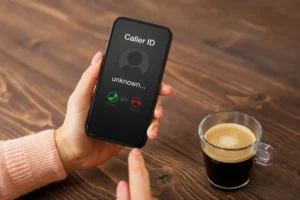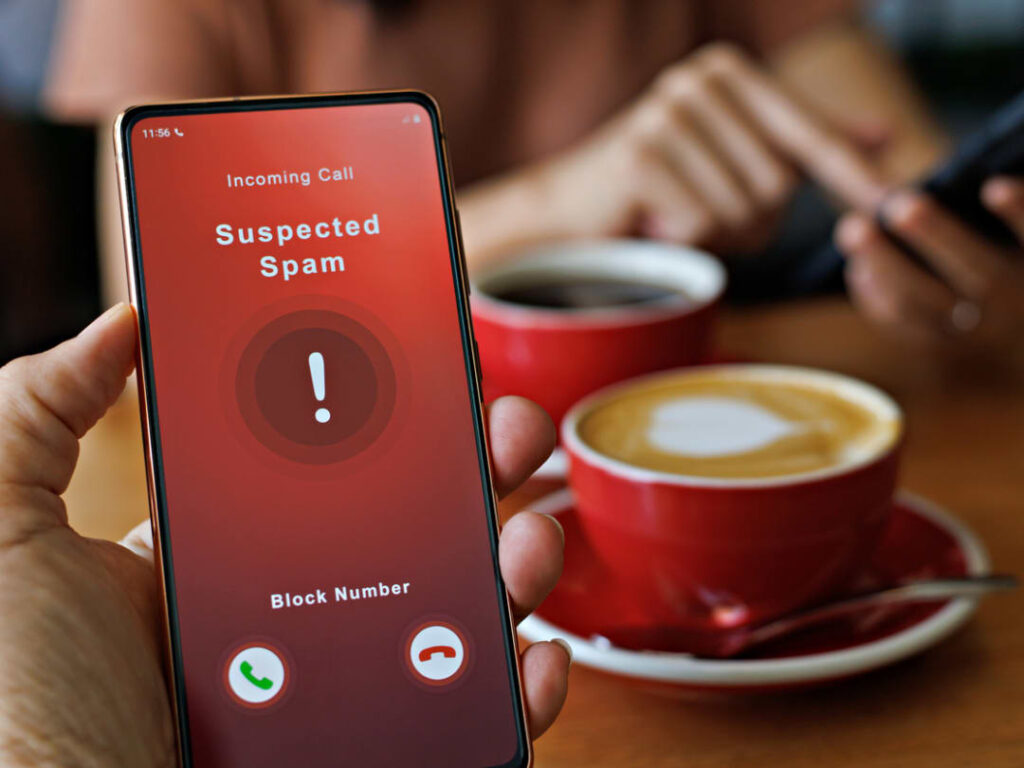How to Stop Unwanted Robocalls Spoofing and Texts in 2025?
We’ve all been suffering so much — suddenly your phone rings, and the caller ID flashes a number you think you know. You answer, and it’s a malicious actor trying to spoof or sell you a timeshare or asking you to give away your personal info. Or worse cases, among them – Parcel scams are very common, you get SMS messages from an unsolicited number that message shows you won a million-dollar lottery or pretends to deliver a luxury package like FINGER rings, smartphones, cosmetic items, and even Bluetooth speakers with a manipulated shipping label, they are trying to deliver to your address, which looks real, but it’s a brushing scam.
If you live in the US, chances are high you’ve faced these unwanted calls or texts. Even in a worst-case scenario, sometimes your own number gets spoofed and flagged as spam, which causes you real headaches and mistrust among others.
Here we understand what’s going on, how big the problem is, why you’re getting more of these spam calls lately, what the growth of spam/robocalls and texts in 2025 is, what you can do to stop it, and how your cellular provider can help.
Similarly, does your cellular provider have some protection to hinder these spoofed robocalls and texts? What are the common tips and tricks to stop this? Can AI have largely contributed to the growing levels of spam calls to users?
Do you ever get robocalls or texts on your phone? Is your suspect a likely spammer and your phone number put on a spoofed, blocked list, or labeled as a “Suspected spam calls”? Well, this can be solved.
What’s Going On with Spam Calls?
Spam calls include all the junk — robocalls, telemarketers, phishing attempts, and texts that come out of nowhere. These calls aren’t just annoying; they’re treated as illegal. Criminals use different tricks to steal money or personal data from unsuspecting people, especially older people. It’s not just an isolated problem.
In 2025, over 96.8% of people have received spam messages in different forms, including mobile text messages, DM on social media, emails, in-app messages, etc.
Men over the age of 65 have received an average of 35.5 spam calls per month in 2025, and this is another cause for their poor mental health. Meanwhile, the younger population aged between 18-34 has likely received a small number of spam calls (14.2 spam calls per month).
In the US, 77% of people had lost their money due to AI phone scam calls.
Take the story of Dave, a retiree in Florida. He gets over 30 spam calls a week. Sometimes, they pretend to be from his bank, asking for his account number. Once, he almost fell for a scam costing him hundreds. Dave isn’t alone. Men aged 65 and over tend to receive the most spam calls — around 35.5 calls a month!
Take a reference from this YouTube video from the Federal Communications Commission (FCC) – which issued a guideline on how and what steps to be taken, and learn through the FCC Consumer Inquiries and Complaints Center — how it works, what you can report, and how we help.
The FCC will do everything possible to protect you and is addressing illegal calls.
The Psychological Negative Effect Of Spam Phone Calls!
Unsolicited and spoofed robocalls are deliberately affecting our lives, and the number of victims is growing in the USA. Spoofers use different techniques to defraud users.
Call spamming or robocalls are making intentional phone calls to commit fraud against customers or are intended to make calls to a large number of users for advertising, promoting, selling something, or spreading malware, etc. These unsolicited communications are called spam calls.
For many years, different businesses used this standard practice to market and advertise their products, but now that technology has reached a new high, malpractitioners use this trend to defraud customers.
Why Are These Calls Increasing?
Two big reasons to know:
1..Technology is evolving, and makes it easier for scammers to fraud havoc in middle-class society. AI tools help fraudsters craft convincing messages or send video messages, even machine learning models have been used to mimic the voice of someone the victim knows. This is why 77% of people who fell victim to AI-driven phone scams lost money.
2..Spoofing tricks your phone. Scammers fake caller IDs, so their number looks familiar or even matches yours. Imagine your own number popping up on someone else’s phone as a spam call! This ruins your reputation and leads to calls to get blocked or labeled as spam.
Who’s Responsible for Protecting You?
What is the scale of this issue? The answer is huge, particularly according to the report shared by TrueCaller, which says Americans lost $39.5 billion USD* to phone scams in 2022.
Telecom users are more vulnerable to falling into tough spots. Different spam call blocking apps usually block spam calls, but mistakenly also avoid blocking real calls.
Many cellular network providers are working on new security measures — like better spam filters and caller ID verification technologies (Cyara Number Trust/SHAKEN). But relying on them alone doesn’t solve everything. Protecting yourself means understanding the problem and taking action.
Spam and Scam Calls: Why Just Leaving It to Telecoms Won’t Cut It!
If your phone starts ringing, do not answer that call if it seems unfamiliar, maybe even local. And if you pick it up—and instantly regret it. It’s a spam call. One of those robotic voices asking if you want to “lower your bills” or warning about “urgent account issues.”
Let’s cut to the chase. Spam calls don’t just annoy—they actually put you at risk. And here’s something to chew on: these calls affect millions in the US every day. US Government spam telecom regulatory “Federal Communications Commission (FCC)” has stepped up with some tools, but is it fair—or even effective—to rely on them alone? Who else can take this report and should take charge?
What Happens When You Answer?

If you answer a spam call from scammers, it means your number is active. They sell it off to other robocallers like a hot commodity at a market, flooding you with even more junk calls. So, if you see a number you don’t know, just cut off that call instead of picking it up.
But what if you do? Here’s what to do:
-
- Install call blocking technology: First things first, start getting used to call blocking technology. Most smartphones let you block numbers, and many cellular providers offer services that help identify spam calls.
- But beware: Scammers usually use a new number in every fresh attempt. Blocking numbers one by one is like trying to seal holes in a sinking ship. The better plan? Don’t answer calls from unknown numbers if you don’t have to.
- Hold Up Now: If you do answer calls from baking agents, investment offers, get a chance to win a lottery, or receive any calls from a charity or special program, just tell them you’ll call them back. And please don’t share any request made by the caller that demands personal info (OTP, banking passwords, card numbers, etc.), previous payment information, or threatens legal action; hold up everything. Then, contact the agency or business the caller claimed to represent—on your own terms. Use a trusted phone number you find on official websites or documents; do not call the phone number provided by the caller.
- Hang up now: Don’t chat, don’t argue, just put the phone down. Talking or reacting can get you tagged as “active number,” increasing spam calls.
- Watch your words: Don’t say “yes” or anything that sounds like confirmation. Many scams start with a simple, “Can you hear me?” Once you say ‘yes’, scammers record it and use it in fake authorizations or financial fraud.
- Ignore prompts to press buttons: Sometimes these messages ask you to “press 1” to hear more or “press 2” to unsubscribe. Don’t follow any actions. If you press any number, means you confirm you’re a real person, inviting more spam.
- Report the call: Head over to donotcall.gov and file a complaint. Reporting the number helps the Federal Trade Commission bust scammers and weaken their networks.
“Ring and Run” — How to Outsmart Phone Spam Calls!
If your phone rings once or twice, then the call stops. You think it’s a missed call from someone important, so you give that number a call back—only to find out you just got caught in a ‘Ring and Run’ scam. Extremely annoying, isn’t it?
What’s the ‘Ring and Run’ Spamming All About?
Scammers make calls to pretend to be someone you know them earlier—they act like a collection agency, a doctor’s chamber, a parcel courier boy, a job recruitment agent, a questionable investor trying to convince you to put up your money, a sales agent offering you counterfeit payment cards, or even law enforcement. They express a time-urgent rushed message to put you in a chaotic feeling of compulsive need, suggesting that you or a family member is in trouble. Sometimes, they tell you to call back a special number, often a premium-rate line that incurs charges as soon as you pick up – these callers have a simple criminal intent.
Here’s a common example: Imagine you get a call claiming your cousin has gotten into legal trouble and needs bail money immediately. The scammer insists you call back at a given number straight away. It sounds serious and alarming—but it’s a trick.
Why Aren’t These Calls Stopped?
These scammers often operate from countries carrying out cross-border fraud, where law enforcement is weak, doesn’t even exist, or sometimes even turns a blind eye. This means it’s hard for authorities to catch them. That’s why you keep getting these scam calls despite all the warnings.
Watch Out for These Common Spammer Area Codes!
Certain area codes pop up more often in scam calls. If you don’t live near these places or know people there, be cautious when you get a call from:
- 216 – Cleveland, Ohio
- 218 – Northern Minnesota
- 332, 347, 646 – New York City
- 657 – La Palma, California
- 712 – Western Iowa
These areas see a lot of scam activity, so it pays to be on your guard.
What About “Do Not Call” Registries?
Registering with the National Do Not Call registry can reduce telemarketing calls. But one point to note before we continue, scammers don’t follow the rules and will keep calling regardless. Reporting suspicious numbers to the Federal Trade Commission helps track down fraudsters, but prevention starts with you.
The Provider Can Help, But Laws Need to Catch Up!
Spam call blocking technology is now available to block these scam calls and protect us from constant telephone harassment. If you buy our no contract phone plans, our network protection technology is available to keep users safe and address spam calls through spam calling protection shields that stop many scam calls before they ring. However, scammers find new ways around these protections all the time -so be careful.
Legislation hasn’t fully caught up yet. That’s why it’s important to get to know all about it. Report to your law enforcement agency if any suspicious activities are found, and urge them to support stronger laws to crack down on call and text spamming.
A Final Word from Someone Like You!
I remember getting one of these calls myself. The voice was calm but urgent, about a missing package I never ordered. I almost panicked. But then I remembered to ask for a call-back number and company name. The caller fumbled and tried to rush me off. I ended the call.
Since then, I’ve become much more cautious, and I use call-blocking apps to keep these nuisances at bay. Trust your gut. When something feels off, it usually is.
Bottom Line!
The ‘Ring and Run’ call spamming aims to cheat you out of money by creating stress and trying to impose time-urgency situations. Don’t fall for it. Use available technology, keep calm in that moment, don’t ask questions, and never call back unknown numbers without verifying them separately.
And if you were previously a victim of such act—share your experience in any public forum, or even you can talk to your family and friends, and let’s stop these call spoofing.
Stay safe. Stay smart. And if all else fails—just don’t pick up spam calls!















